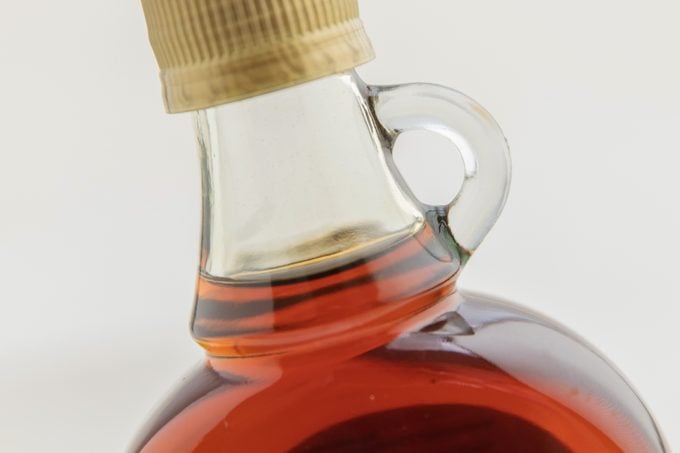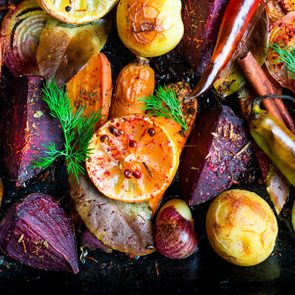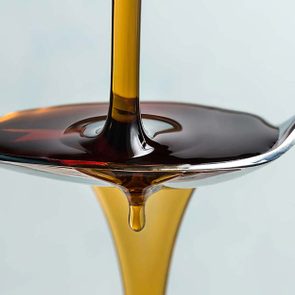Is Maple Syrup Healthy?
Updated: May 18, 2021
Registered dietitian and plant-based diet specialist Cynthia Sass shares everything you need to know about maple syrup, including the calories, nutrition facts, and more.
Our editors and experts handpick every product we feature. We may earn a commission from your purchases.
The history of maple syrup
Here’s some sweet news: Maple syrup may be one of the best healthy food trends of the year. According to New Hope Network, the industry enjoyed record-setting production, and consumer packaged sales rose 30 to 40 percent in 2020, compared to 2019. That’s likely due to the demand for all-natural foods—like natural sweeteners—and a growing awareness of maple syrup’s benefits. But is maple syrup healthy?
Maple syrup is one of my personal comfort foods. This distinctly flavorful, beautiful, and nutritious sweetener has been a staple ingredient in many households for generations, and it has a very long history.
According to Michigan State University (MSU) Extension, maple syrup was made by Native Americans long before Europeans settled in America. They would leave the sap out in the cold to freeze and that would separate the water from the sugar, allowing them to concentrate the sweetener. Another method involved evaporating the water using hot stones.
While technology has influenced how maple syrup is produced, the overall process has remained largely unchanged. Maple syrup harvesters tap maple trees to collect their sap, which flows only briefly when temperatures are just right. Reverse osmosis filters the sap, removing water, and then it’s boiled or steam heated, and filtered. Producing one liter of syrup can require up to 40 liters of sap, according to Maple From Canada.
The best types of maple trees to tap are sugar and black maple, which typically produce the sweetest sap, according to the MSU Extension. However, red and silver maple trees are also sources of sap.
Canada produces over 70 percent of the world’s maple syrup, primarily in Quebec. Within the U.S., Vermont produces the most, although other states make maple syrup, including New York, Maine, Wisconsin, Michigan, Pennsylvania, and New Hampshire.
Types of maple syrup
In 2015, producers across North America agreed to standards for maple syrup grades. The four grades include golden, amber, dark, and very dark, according to the United States Department of Agriculture (USDA). All four are produced the same way; the color comes from the temperature and microbial activity in the syrup.
According to the University of New Hampshire Extension, dark and very dark grades have the most robust flavor. These tend to be produced later in the season. Because it takes longer to make the syrup at this time, the lengthier boiling period required allows for more flavor—as well as color—to develop.

Maple syrup nutrition
A quarter cup of maple syrup has about 200 calories, 0 grams of protein, 53 grams of carbs (17 percent of the DV), 0 grams of fat, 0 grams of fiber, and 53 grams of sugar, according to the USDA.
For a quarter cup of this sweet stuff, you’re getting lots of carbs, no protein, virtually no fat, and no fiber. So, it’s safe to say that maple syrup is made up predominantly of carbs and sugar.
However, maple syrup does have lots of minerals and antioxidants, including 60 mg of calcium (6 percent of the DV), 175 mg of potassium (5 percent of the DV), 1.8 mg of manganese (95 percent of the DV), and 1.08 mg of iron (6 percent of DV). That alone sets it apart from refined white sugar.
The health benefits of maple syrup
A study published in 2014, in the journal Plant Foods for Human Nutrition, found that among 35 samples from Southern Ontario, darker maple syrups contained higher antioxidant potential, in addition to phosphorous, calcium, and total mineral contents.
Antioxidants are one of maple syrup’s star attributes. Research published in the Canadian Forest Service Publications found that the sweetener can pack dozens of unique antioxidants. One tablespoon also provides over 30 percent of the DV for manganese, a mineral that supports bone health, collagen production, and wound healing. Maple syrup also delivers smaller amounts of calcium, iron, potassium, and zinc.
Another potential nutritional benefit to note: Maple syrup has a glycemic index of 54 in comparison to 65 for table sugar. As a result, maple syrup may raise blood sugar slightly slower than regular sugar. That said, any sugar still raises blood sugar. (Here are easy swaps to reduce your sugar intake.)
Is maple syrup healthy?
Although maple syrup is my go-to sweetener as a dietitian, it should still be enjoyed only in moderation. When you drizzle maple syrup onto a dish at home, or when it’s added to products like granola or energy bars, it is considered “added sugar,” instead of the naturally occurring sugar inherently found in fresh fruit.
The American Heart Association recommends limiting added sugar consumption to no more than six teaspoons daily for women, or nine for men.
That’s because of the link between excess added sugar intake and the risk of obesity, heart disease, high blood pressure, and obesity-related cancers, according to the journal Circulation. (This is how sugar could be making you sick.)
How to use maple syrup
Maple syrup is incredibly versatile, pairing well in a wide variety of sweet and savory dishes—from oatmeal and pancakes to salad dressing, BBQ beans, sweet potatoes, braised greens, cornbread, desserts, and even cocktails. I also love to add maple syrup to my coffee or plant-based lattes.
For a simple sweet and savory sauce, whisk maple syrup with brown rice vinegar, fresh-squeezed orange juice, freshly grated ginger root, minced garlic, salt, and pepper. Add to sauteed veggies—such as onion, broccoli, bell pepper, spinach, and black-eyed peas—and serve over brown rice; garnish with chopped nuts.
For fast three-ingredient no-bake cookies, combine maple syrup with nut butter, and either almond flour or oat flour.
Premium maple syrups also make fantastic gifts. Check out Maple Guild’s organic bourbon barrel-aged Vermont maple syrup ($14).
If you decide to add to your own stash, keep in mind that maple syrup doesn’t have an indefinite shelf life. According to the USDA, maple syrup can be kept unopened in your pantry for about one year. Store opened bottles of syrup in the refrigerator and use them for up to 12 months. (Here are the foods you shouldn’t eat past the expiration date.)
Bottom line
Maple syrup is a good sugar substitute, in moderation. Although it’s more nutritious than white sugar, it is still considered “added sugar,” as opposed to the naturally occurring kind found in fresh fruit. Keep your portion sizes in check—and enjoy!
























